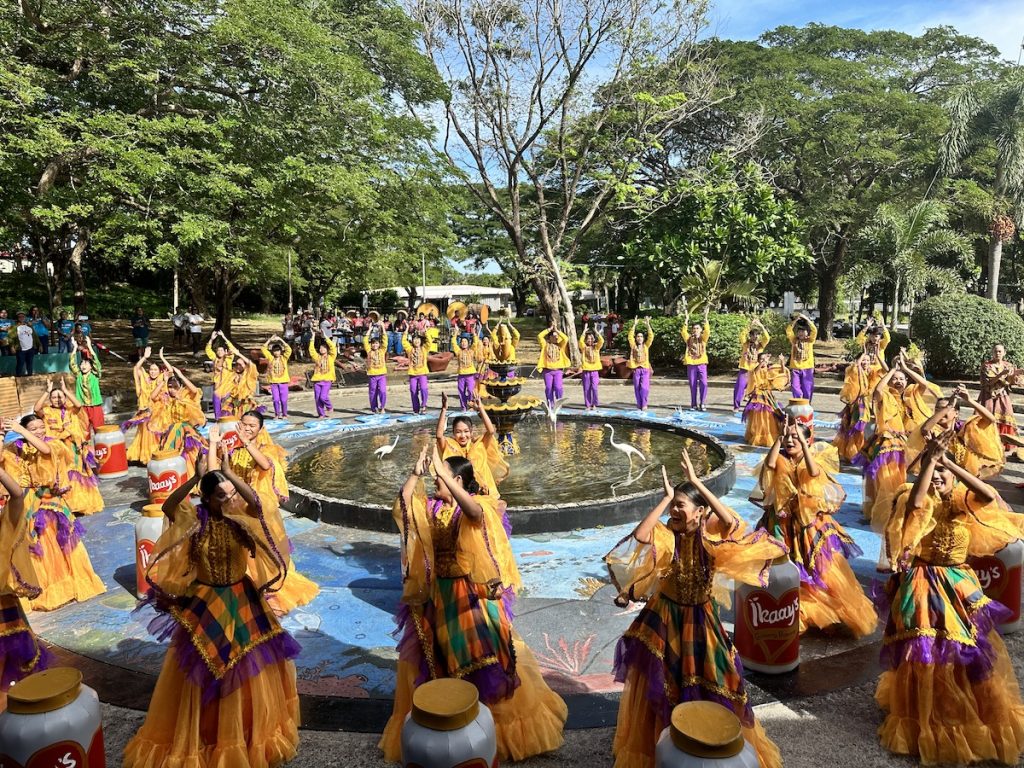Food, Heritage, and Arts: The Philippine Experience Program Western Visayas
6 min read
Discover Western Visayas Through the Philippine Experience Program
When we think of Western Visayas, the first image that comes to mind is the white sand beaches of Boracay. While the sun and sand are always good reasons to come to this part of the Philippines, the Department of Tourism Region 6 office is putting the spotlight on more reasons to love Western Visayas.
For three days, we revelled in the region’s bustling cultural scene and experienced the best of the best of Western Visayas’ food, heritage, and arts.
The tour is part of the Philippine Experience Program of the Department of Tourism, designed to diversify cultural tourism offerings, support heritage preservation, and instill pride among Filipinos.
We started off with a Slow Food immersion and Sugar Heritage Trail Tour in Silay City, Negros Occidental.
Our first stop was Casa A. Gamboa. Here, we tasted and savored food that was good, clean, and fair. The Slow Food Community of Negros, which has been promoting and preserving the traditional food of Negros Island, prepared a breakfast banquet for us.
We were served kesong puti pandesal, binatwanan nga chicken and pork adobo pandesal, and blue crab bun. We also had Negrense heritage dishes like panara, a turn-over pastry with mung bean sprouts; puto lanson, a rice cake made of cassava, glutinous rice and coconut milk; piaya, the famous pressed pastry with muscovado sugar filling; and binandoy, a sweet potato dessert with toasted coconut.
After a hearty breakfast, we traveled to the Hawaiian-Philippine Company, the oldest operational sugar center in Silay City, where we rode one of the last operational steam locomotives in the country that is used to transport sugar cane from the haciendas.
Negros Occidental is known as the sugar capital of the Philippines, and much of its culture and identity revolves around sugar. It’s the haciendas that afforded the mansions we see in Silay City, known as the “Paris of Negros” and in other parts of the province. It influenced its lifestyle and food.
At Hawaiian-Philippine Company, we also had some of Negros’ best pastries and confectionaries.
We had señorita, a mix of butter, condensed milk, and flour. We also tasted the sundol, which has rice flour, coconut milk, and dark brown sugar. Another one is the paño- paño, consisting of flour, shortening, sugar, and banana. They also served the lubid-lubid, cooked with refined sugar, yeasts, salt, milk, and shortening.
After Silay City, the fête continued. In Bacolod City, we had a festive lunch at Bantug Lake Ranch, where two of the things the province is known for take centerstage – the Masskara Festival and Chicken Inasal.
Masskara dancers welcomed us while grills were busy preparing the Chicken Inasal, or barbecue chicken, which the city promotes as its cultural property.
Our caravan also took us to Bacolod City New Government Center, Orange Project Art Gallery, and the ANP Negros Showroom. And in each stop, the festivities continued with dances and other entertainment.
In Orange Project and Art District, one of the very few art parks in the country, we viewed murals and art installations, watched performances about babaylans or Filipino shamans, and painted masks.
Our day ended with an opulent ball, which gave us a glimpse of the hacienderos’ lavish lifestyle. The Governor’s Ball at the Negros Occidental Capitol Social Hall can easily rival the best balls in the country. Negrenses lined up at the red carpet to welcome guests, and while guests walked the red carpet, they were serenaded by an orchestra. The delicious buffet dinner was also accompanied by entertainment and capped by a serenade from a chorale group and an astonishing fireworks display.
On our second day, we boarded a ferry that connects Negros Island and Panay Island, then traveled to Southern Iloilo.
The first part of the day was all about pilgrimage and wellness, which are essential features of the Philippine Experience Program. The focus was not just on Catholicism but also on traditional beliefs.
We visited Garin Farm, a popular tourist attraction known for its “heaven-like” feature.

There, we journeyed from creation to ascension. We started from the 480-step Stairway to Heaven, which led us to a dark tunnel. After navigating in the darkness, we were greeted by the light – a massive white landscape depicting the heavens.
Aside from Garin Farm, we also visited the historic San Joaquin Church, located in San Joaquin, and the Santo Tomás de Villanueva Parish, more popularly known as Miagao Church.

Our lunch was at the Miagao Cultural Hall for another memorable dining experience.
While having lunch, we were treated to some breathtaking cultural performances, including a ritual performed during wedding ceremonies.
After lunch, we proceeded to Tigbauan to visit two of its popular attractions – The Southeast Asian Fisheries Development Center (SEAFDEC) and Sol Y Mar Eco-Farm.

In SEAFDEC, we visited the FishWorld Museum-Aquarium, which educates the public about aquatic ecosystems and biodiversity, aquaculture, fisheries, and the aquatic sciences. We saw in the museum injured or sick sea turtles stranded onshore or captured by coastal fishing gear that are brought to FishWorld for medical care and feeding before they are released back to sea.
While in SEAFDEC, we also had a glimpse of Tigbauan’s cultural richness through its Saludan Festival, one of Iloilo’s emerging festivals.

Sol Y Mar Eco-Farm offered the Philippine Experience Program delegates a town fiesta feel, complete with banderitas or buntings, in a farm setting. We were welcomed with folk dances, had local meryenda, watched artists paint their masterpieces, and listened to a rondalla or an ensemble of stringed instruments.
We ended our day with dinner at The National Museum of the Philippines – Iloilo (NMP – Iloilo), which was built in a former Prison. We were welcomed by the Dinagyang parade of light dancers and drinks. And, it was again a sumptuous feast of some of the best fares from the newly-installed UNESCO creative city of gastronomy.
Our third and last day was spent on a rolling tour of Iloilo City with stops at its popular Esplanade, the Molo Mansion, the UP Visayas Museum of Art and Cultural Heritage (UPV MACH), and finally, at the Camiña Balay Nga Bato for our farewell lunch.

At each stop, there is a glimpse of Ilonggo culture. At the Esplanade, dancers performed for us. At UPV Mach, the UPV chorale filled the halls with their beautiful voices and we had the chance to explore its different galleries featuring the province’s rich art and culture. At Camiña Balay Nga Bato, Filipino love songs were performed by a duo for us.
The highlights are what makes Iloilo City a city of gastronomy.

At the Molo Mansion, we had a filling of molo soup, or Filipino pork dumpling soup, and Batchoy, a Filipino noodle soup of pork offal, crushed pork cracklings, chicken stock, beef loin, and round noodles. We also tasted their new concoction, Batchoy Ice Cream, which is vanilla ice cream topped with crispy noodles for crunch, and Batchoy flavors for a bit of saltiness.
In our farewell lunch, we had Camiña Balay Nga Bato’s popular bino-ug nga baboy or grilled pork; ratotoy, which is like a local version of ratatouille; and Embotido de Arevalo, the family’s version of Filipino-style meatloaf. We also had pancit, fried milkfish, shrimp, molo soup, vegetable rolls, empanadas, and fruits. The meal was capped by Camiña Balay Nga Bato’s tsokolate, or chocolate drink.
Both venues, the Molo Mansion and Camiña Balay Nga Bato are attractions by themselves.
The Molo Mansion, also known as the Yusay-Consing Mansion, is one of the most outstanding historical homes in the Philippines. The Camiña Balay Nga Bato, formerly known as Avanceña House, is a century-old heritage house.
Nothing really defines a country than its culture and the Philippine Experience Program is all about that. It is a lifetime experience whose impact will remain indelible in our minds for years.
Like, Follow, and Subscribe to OutofTownBlog.com on Facebook, Twitter, Instagram, and Pinterest, and Team out Of Town on YouTube for more Western Visayas Travel Spots.
Read: 21 Must-Visit Tourist Spots in Visayas to Add to Your Bucket List





